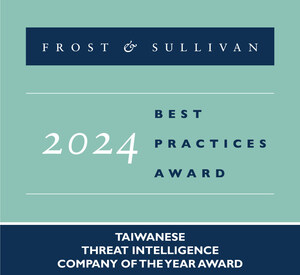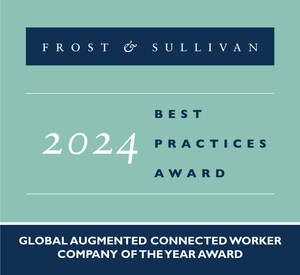Analytical Instrumentation Vendors Focus on Solutions that Reduce the Total Cost for Customers
Ability to improve productivity and analysis time strengthens growth opportunities for process, online and continuous analyzers, finds Frost & Sullivan's Test & Measurement team
SANTA CLARA, California, Aug. 18, 2017 /PRNewswire/ -- Increasing customer understanding of the value of analytical instruments is driving demand for laser-based analyzers, near infrared spectrometers, ultrahigh-performance liquid chromatographs and other productivity-boosting analyzers. Emerging regions such as India, Latin America and South Korea, which are witnessing tremendous industrial activity, will contribute to analytical instrument uptake as they try to improve product manufacturing and quality control to meet global standards. To leverage these positive trends, test companies must raise customer knowledge about advanced analytical instruments, work with regulatory authorities to tighten quality requirements, collaborate with customers to develop on-premise methods for easier access, and strengthen their overall inventory.
Outlook of the Global Analytical Instrumentation Industry, 2017 and 2018, recent experiential research from Frost & Sullivan's Test & Measurement Growth Partnership Service, offers insights on key market trends, growth opportunities and challenges for test vendors, and the potential of each product and end-user segment.
Click here for complimentary access to more information on this analysis and to register for a Growth Strategy Dialogue, a free interactive briefing with Frost & Sullivan's thought leaders.
"New capabilities, business models, mergers and acquisitions, and geographic expansion will be critical success factors," said Frost & Sullivan Test and Measurement Research Analyst Janani Balasundar. "Analytical instrumentation manufacturers must reduce cost of ownership and maintenance requirements of analyzers, introduce efficient portable and continuous form factors of laboratory instruments, simplify the user interface of software considering the shortage of skilled labor, enhance automation capability of instruments, and eliminate extensive sample preparation procedures."
Several market trends are shaping the future of analytical instrumentation:
- Manufacturers are reducing the cost of ownership of ultraviolet visible (UV-Vis) spectrometers to meet the demands of the environmental testing sector. As many commercialized laboratories exist in this sector, the demand for low-cost spectrometers will continue to grow.
- Sales of ultra-high performance and two-dimensional liquid chromatography (LC) systems will drive laboratory LC revenues to $2,819.4 million in 2018 with an annual growth rate of 6.8 percent.
- Demand from the biopharmaceutical sector will fuel mass spectrometer uptake in the pharmaceutical, biotechnology and life sciences industries, pushing revenues to $1,560.6 million in 2018 with an annual growth rate of 7.8 percent.
- New drug research conducted in China will increase the demand for LC and mass spectrometers.
- Growth in food testing will exceed 7 percent from 2017 to 2018 for liquid and ion chromatographs.
- Laboratory analysis is shifting to continuous and portable analysis, and users will seek online and portable instruments.
Geographically, analytical instrumentation will experience less demand in Europe compared to other regions. In the US, the upswing in manufacturing and shale gas production will bolster sales. The Asia-Pacific market will experience high demand, but vendors must promote advanced analytical instruments to customers.
"Process, online and continuous analyzers will be in demand more than laboratory analytical instruments due to their ability to reduce additional analysis and improve customer productivity," stressed Balasundar. "Analytical instrumentation manufacturers should focus on reducing instruments' maintenance requirements to cut down the total cost for customers. There is also a need for a common software platform to access and control different technology solutions, which will further improve productivity."
Frost & Sullivan's study covers the following analytical instrumentation segments:
- Chromatography: gas chromatography (GC), LC, ion chromatography
- Molecular Analysis Spectroscopy: infrared spectrometer, ultraviolet-visible spectrometer, Raman spectrometer
- Elemental Analysis Spectroscopy: atomic absorption spectrometer, optical emission spectrometer, inductively coupled plasma (ICP) spectrometer
- Mass Spectrometry (MS): single quadrupole LC-MS, tandem LC-MS, GC-MS, time of flight (TOF) LC-MS, matrix-assisted laser desorption/ionization (MALDI)-TOF MS, ICP-MS, portable MS
- Analytical Microscopes: Optical Microscopes, Electron Microscopes, Scanning Probe Microscopes
- Gas Analyzers: Zirconia Analyzer, NDIR Analyzer, Paramagnetic Analyzer, Electrochemical Analyzer, Flame Ionization Detector, Thermal Conductivity Analyzer, Chemiluminescence Analyzer, Trace Oxygen Analyzer
- Liquid Analyzers: Conductivity Analyzer (Laboratory, Process & Portable), TOC (Total Organic Carbon) Analyzer (Laboratory, Process & Portable), pH/ORP (pH/Dissolved Oxygen Analyzer ) (Laboratory, Process & Portable), Turbidity Analyzer (Laboratory, Process & Portable), Dissolved Oxygen Analyzer (Laboratory, Process & Portable), Chlorine Analyzer (Laboratory, Process & Portable)
- Analytical X-ray Instrumentation: X-ray Diffractometer (XRD - Laboratory & Portable), Energy Dispersive X-ray Fluorescence (ED XRF) , Wavelength Dispersive X-ray Fluorescence (WD XRF), X-ray Fluorescence (XRF - Portable)
About Frost & Sullivan
Frost & Sullivan, the Growth Partnership Company, works in collaboration with clients to leverage visionary innovation that addresses the global challenges and related growth opportunities that will make or break today's market participants. For more than 50 years, we have been developing growth strategies for the global 1000, emerging businesses, the public sector and the investment community. Contact us: Start the discussion
Outlook of the Global Analytical Instrumentation Industry, 2017 and 2018
K193-30
Contact:
Jaylon Brinkley
Corporate Communications – North America
P: (210) 247.2481
F: (210) 348.1003
E: [email protected]






Share this article